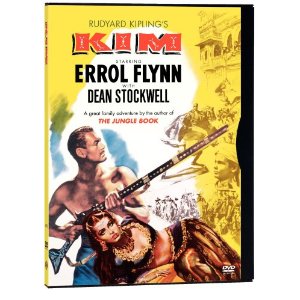
Florida Air Academy
English Department Chair
Connections to Rudyard Kipling's Novel KimMost of the Sherlock Holmes stories are narrated by his faithful sidekick, Dr. Watson. However, in Norbu's account of Holmes's adventures in the East, Watson is out of the picture. Cleverly, Norbu borrows a character from Rudyard Kipling's picaresque novel Kim -- Hurree Chunder Mookerjee.
Hurree Chunder Mookerjee is a Bengali intelligence operative who works for the British. Sharad Keskar, editor of The Kipling Journal, makes the following comment on Hurree Babu: "Kipling was no fan of the Western educated Bengali Babu. But in Hurree Chunder Mookerjee he presents a composite portrait of a character with many attractive qualities, including a rare combination of timidity and bravery. However, Kipling could not shy away from the typical bombast that Bengalis of Hurree’s background were prone to. As a result, much of the humour in Kim owes a debt to Hurree." Presumably, it was these attractive qualities and humor that persuaded Jamyang Norbu to use Hurree as his narrator. Other characters from Kim appear in Norbu's novel. One is Colonel Crighton, who is British India's spymaster -- in essence, Hurree's "boss." Another is Capt. E. Strickland, Esq. who appears not only in Kim, but in a number of short stories written by Rudyard Kipling. You can read one, "Miss Youghal's Sais," along with other short stories by Kipling, by clicking here. In chapter 8 of The Mandala of Sherlock Holmes, we meet another character from Kim -- Mr. Lurgan. In Kim, Lurgan runs a jewel shop, but the shop is merely a front behind which Lurgan engages in espionage for the British. Lurgan's character is most famous for testing Kim using "The Jewel Game," also known as "Kim's Game." This memory game is still played with young children today. To learn how to play, click here. Finally, the novel often refers to a mysterious spy called "K.21" -- whom one can only assume is Kim himself. Activity: Have students read Kim or excerpts containing the character Hurree Chunder Mookerjee. There are also two film versions of Kim, one released in 1950 and one in 1984. Click the images below for purchase information. |
This site was created by Melissa Alton at the NEH Summer Institute "Literatures, Religions, and Arts of the Himalayan Region," held at the College of the Holy Cross, Summer 2011.



